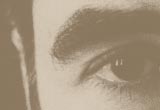

 |
|
|
In the first years of the 60ies, like many others in this time, a 15 year old boy called Manuel Blesa left his small home village Ariño in Teruel, Spain, to find his luck elsewhere. At these times Ariño was a very small and poor village in the middle of nowhere, whose inhabitants worked in the local coal mines or as farmers. Manuel Blesa has been born there in 1945, a hard time for everybody, working in the summer heat on the fields of in the winters cold during the olive harvest. Nevertheless, among other chilhood memories these hard ones are the base of the later formed strong character of Manuel Blesa's art of painting. Before he was able to dedicate all his energy to art, he was forced to work for his living as a hairdresser, waiter, guitar player and also a restaurator of antiques.
As always, in the beginning everything is hard. Of course Manuel Blesa was not an exception to this rule. He was trained some time by Alejandro Cañada*) in Zaragoza and Revello de Toro*) in Barcelona at the art acadamy "La Llotja". But soon he decided that the rest was his own business. He started his career as a portrait painter in Sitges, a picturesque and beautiful small village at the mediterranean coast, and on the canarian islands. That's where he first met his wife Huberta, a magnanimous art loving woman of firm character.
After some years, Blesa decided together with his wife and his children Manuel and Amaya to settle down in Sitges. Sitges gave him the opportunity and the inspiration to develop his artistic work. At these times his preferences in painting were the landscape of Teurel, sterile and dry, overfilled with light and colours, and old people whose faces have been wrinkled by the sun the labour on the fields. This was followed by the memories of every day objects which seemed to be little artworks. Finally these objects became his inspiration and are now the base of his personal way of still-life painting, which characterizes Blesas work.
Like a guard that is watching over the culture and the elements of his past; thats how one could describe Blesa's desire to catch the special beauty of the creamics in its numberless varieties. Populare and antique pottery (XV - XIX century) from Muel and Teruel, copper objects, candlesticks, dolls with porcelain faces, a wooden carved Jesus Christ and odd compilations, which surround him in his artelier are the inspiring elements that give Manuel Blesa's work expression and originality, and whose plasticity is emphasized by its sentimentalism.
*) respected artists and art teachers. |
|